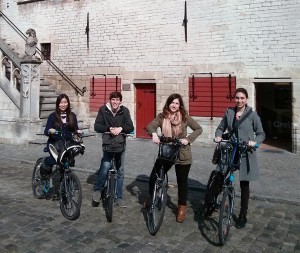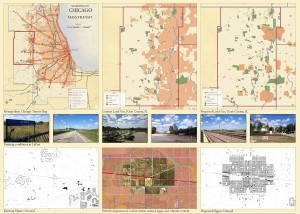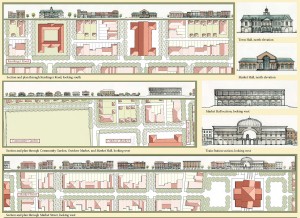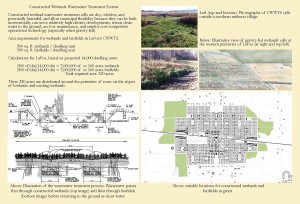
LaFox (2014): Located in fertile rolling farmland currently threatened by sprawl, LaFox (Kane County), Illinois is presently underutilized, a small hamlet located between Elburn to the west and Geneva to the east, occupied by an east-west freight and commuter rail line and stop, a 300-car parking lot, scattered light industrial buildings, and a small cluster of historic houses. The student proposal for LaFox —conceptually part of The Notre Dame Plan of Chicago 2109 vision for metropolitan Chicago— is a network of streets, blocks, squares, and parks that occupy 1240 acres (1.9375 square miles), that built out would accommodate a population of 25,000-35,000 residents in mostly two-story buildings. To better promote local agriculture, manufacturing, and other entrepreneurial activities, the students have proposed and designed a draft of a Land Value Tax (LVT). This would be a single tax to replace all of Kane County’s current taxes and fees, would tax only land based upon any particular parcel’s proximity to socially-created value, and would not tax buildings or other improvements. Its goal would be simultaneously to create both disincentives to land banking and incentives to development, including market development of a greater range of houses and housing. (For a fanciful account of how this might come to pass, see the conjectural fiction “Hunting LaFox.”) Finally and not least, LaFox itself is light on the land. More than 40% of the area within LaFox’s borders is dedicated to public parks, squares, plazas, and streets. Local wetlands, lowlands, and creeks remain open as natural boundaries. And near LaFox’s perimeter are gravity-fed constructed wetland cells, components of a passive ‘natural’ wastewater treatment system that returns local wastewater directly to the ground as purified water. In April 2015 the student proposal for LaFox received a Student Merit Charter Award from the Congress for the New Urbanism.

-300x202.jpg)





 map-300x219.jpg)
